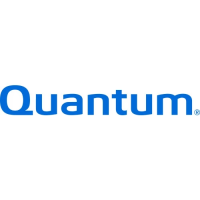Section 5
SCSI Programming Guidelines
5.2.8
STATUS PHASE
The STATUS phase allows the target to request that status information be sent from the target to the
initiator. The
ProDrive will assert C/D and
I/O
and negate the MSG signal during the REQ/ACK
handshake
of
this phase.
5.2.9
MESSAGE PHASE
The message phase refers to both the MESSAGE IN and MESSAGE
OUT
phases. The first byte
transferred in either
of
these phases must be a single-byte message
or
the first byte
of
a multiple-byte
message. Multiple-byte messages must be wholly contained within a single message phase.
5.2.9.1
MESSAGE
IN
Phase
The MESSAGE IN phase allows the target to request that messages be sent to the initiator from the target.
The
ProDrive will assert C/D,
I/O,
and MSG during the
REQ/ACK
handshake(s)
of
this phase.
5.2.9.2 MESSAGE OUT Phase
The MESSAGE OUT phase allows the target to request that a message be sent from the initiator to the
target. The
ProDrive will invoke this phase at its convenience
in
response to the ATTENTION
condition created by the initiator.
(See Section 5.3.1 for a description
of
the ATTENTION condition.)
The
ProDrive will assert C/D and MSG and negate I/O during the
REQ/ACK
handshake(s)
of
this
phase. It will handshake byte(s)
in
this phase until ATN goes false.
If
the ProDrive receives all the message byte(s) successfully (i.e., no parity errors), it will change to any
information transfer phase other than the
MESSAGE OUT phase and transfer at least one byte. The
ProDrive may also indicate that it has successfully received the message byte(s) by changing
°to
the BUS
FREE phase (e.g., ABORT or BUS DEVICE RESET messages).
5.2.10
SIGNAL RESTRICTIONS BETWEEN PHASES
When
the SCSI bus is between two information transfer phases, the following restrictions apply to the
SCSI bus signals:
1)
The BSY,
SEL,
REQ, and ACK signals must not change.
2)
The
C/D,
I/O,
MSG, and DATA BUS signals may change. When switching the DATA BUS
direction from out to in (target to initiator), the ProDrive will delay driving the DATA BUS by
at least a
data release delay plus a bus settle delay after asserting the
I/o
signal, and the initiator
must release the
DATA BUS no later than a data release delay after the transition
of
the I/O
signal to true. When switching the DATA BUS direction from in to out (initiator to target), the
ProDrive will release the DATA BUS no later than a deskew delay after negating I/O.
3) The A TN and RST signals may change as defined under the descriptions for the ATTENTION
condition (5.3.1) and
RESET condition (5.3.2).
5-6
SCSI
Programming
Guidelines

